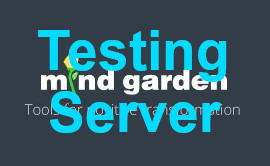Managing Workplace Worries and Fears: What Burnout Can Teach Us
by Christina Maslach
Author of the Maslach Burnout Inventory and Areas of Worklife
Posted on 20 March 2020
The COVID-19 pandemic is disrupting the world dramatically, on a daily basis. And most of us feel like we are flying blind, given how much is unknown and uncertain. What should we do, and how do we take care of ourselves and others?
This disruption takes on special significance in the workplace, where the well-being of fellow employees is critical for the functioning of the team or organization. What can be done to help workers deal with shared anxiety, or unexpected changes in job tasks, or the loss of social support?
The common response is to focus on helping individuals cope better with ongoing stressors. But the research on burnout points to a different response – we should focus on helping the workplace modify its sources of stress. In other words, fix the job, not just the person.
It might seem a little crazy, or counter-intuitive, to call for workplace change during a crisis --- after all, shouldn’t we stick with what we already know and do? However, given that the current crisis is already causing so much change and disruption, we have new opportunities to think outside the box, and to experiment with new procedures and alternative strategies.
Burnout research has identified at least six potential problem areas between the job and the person: demand overload, lack of control, insufficient reward, a socially toxic workplace community, absence of fairness, and value conflicts. Flip these six areas to focus on a positive fit between employee and workplace, and they can become guideposts for improving the employees’ experience. How could job assignments and responsibilities be redesigned to yield a more sustainable workload? Are there better ways to recognize and reward special efforts? What kinds of changes in schedules or activities would promote more positive support and civility between colleagues? Etc.
The success of these changes, whether large or small, will depend on employee buy-in and willingness to make that change happen. Keep in mind these three Cs:
Collaborate. Ask employees to be a part of making things better. Ask for their ideas and their feedback on various alternatives and listen to them. If employees do not see the potential benefit of a proposed change, it will not happen.
Customize. Adapt a proposed change to the local culture and type of occupation. One size of “best practice” does not fit all, so encourage creative modifications that will make it “ours.”
Commit. Sustain the effort to achieve positive improvements. Evaluate and modify until you get it right. You may not succeed at first, but it is important to keep trying so as to achieve a good outcome. The bottom line on burnout is that it is a social phenomenon, not an individual weakness. Interpersonal and organizational solutions need to be framed in terms of “we” and “us”– and need to be shared and reciprocated by everyone. Despite the physical social distancing that is now being required to deal with COVID-19, we must come together in a psychological partnership for the common good, so that we help all people achieve better health and well-being, both at work and at home.
Co-author of the Areas of Worklife, Michael Leiter, also wrote a blog about this situation, Burnout in a Time of Covid-19.
Author of the Maslach Burnout Inventory and Areas of Worklife
Posted on 20 March 2020
The COVID-19 pandemic is disrupting the world dramatically, on a daily basis. And most of us feel like we are flying blind, given how much is unknown and uncertain. What should we do, and how do we take care of ourselves and others?
This disruption takes on special significance in the workplace, where the well-being of fellow employees is critical for the functioning of the team or organization. What can be done to help workers deal with shared anxiety, or unexpected changes in job tasks, or the loss of social support?
The common response is to focus on helping individuals cope better with ongoing stressors. But the research on burnout points to a different response – we should focus on helping the workplace modify its sources of stress. In other words, fix the job, not just the person.
It might seem a little crazy, or counter-intuitive, to call for workplace change during a crisis --- after all, shouldn’t we stick with what we already know and do? However, given that the current crisis is already causing so much change and disruption, we have new opportunities to think outside the box, and to experiment with new procedures and alternative strategies.
Burnout research has identified at least six potential problem areas between the job and the person: demand overload, lack of control, insufficient reward, a socially toxic workplace community, absence of fairness, and value conflicts. Flip these six areas to focus on a positive fit between employee and workplace, and they can become guideposts for improving the employees’ experience. How could job assignments and responsibilities be redesigned to yield a more sustainable workload? Are there better ways to recognize and reward special efforts? What kinds of changes in schedules or activities would promote more positive support and civility between colleagues? Etc.
The success of these changes, whether large or small, will depend on employee buy-in and willingness to make that change happen. Keep in mind these three Cs:
Collaborate. Ask employees to be a part of making things better. Ask for their ideas and their feedback on various alternatives and listen to them. If employees do not see the potential benefit of a proposed change, it will not happen.
Customize. Adapt a proposed change to the local culture and type of occupation. One size of “best practice” does not fit all, so encourage creative modifications that will make it “ours.”
Commit. Sustain the effort to achieve positive improvements. Evaluate and modify until you get it right. You may not succeed at first, but it is important to keep trying so as to achieve a good outcome. The bottom line on burnout is that it is a social phenomenon, not an individual weakness. Interpersonal and organizational solutions need to be framed in terms of “we” and “us”– and need to be shared and reciprocated by everyone. Despite the physical social distancing that is now being required to deal with COVID-19, we must come together in a psychological partnership for the common good, so that we help all people achieve better health and well-being, both at work and at home.
Co-author of the Areas of Worklife, Michael Leiter, also wrote a blog about this situation, Burnout in a Time of Covid-19.

 SEARCH
SEARCH LOGIN
LOGIN  BLOG
BLOG
 CART
CART